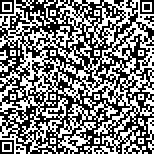本文已被:浏览 67次 下载 32次
Received:March 04, 2024 Published Online:May 20, 2025
Received:March 04, 2024 Published Online:May 20, 2025
中文摘要: 目的 探讨创伤性骨折患者心理韧性变化轨迹,分析不同轨迹亚型的预测因素,为针对干预提供参考。方法 选取康复大学青岛医院 2020年 8月至 2023年 8月收治的 102例创伤性骨折患者为研究对象。采用一般资料调查表收集患者临床资料,采用社会支持量表、医院焦虑抑郁量表、 Herth希望量表评估患者社会支持程度、焦虑抑郁程度及希望水平。在调查后 1、3、6个月进行随访,并采用心理弹性量表评估患者心理韧性。分析不同时间点患者心理韧性水平的差异,采用潜变量增长混合模型识别潜在变化轨迹亚组,并分析影响变化轨迹亚型的核心因素。结果 创伤性骨折患者入院时及出院后 1、3、6个月的心理韧性得分分别为(49.67±8.54)分、(56.32± 9.45)分、(67.45±7.23)分、(79.36±8.41)分,总体呈上升趋势,且差异有统计学意义(F=242.979,P<0.01)。识别出 3条心理韧性潜在变化轨迹亚型:高心理韧性症状 -快速升高组(29.41%)、中心理韧性症状 -持续稳定组(28.43%)、低心理韧性症状-缓慢升高组(42.16%)。决策树模型显示,性别、年龄、社会支持程度、希望得分、抑郁得分和焦虑得分均可预测患者心理韧性变化轨迹亚型,其中社会支持重要性为 100%。结论 创伤性骨折患者心理韧性发展轨迹存在群体异质性,社会支持是核心预测因素。临床可通过构建以社会支持为核心的干预方案对患者进行干预,对改善其心理韧性具有积极意义。
Abstract:Objective To investigate the trajectory of mental resilience in patients with traumatic fracture and analyze the predictive factors of different trajectory subtypes, so as to provide a reference for intervention. Methods A total of 102 patients with traumatic fractures treated at the Qingdao Hospital of University of Health and Rehabilitation Sciences from August 2020 to August 2023 were selected as the study subjects. General data questionnaires were used to collect clinical data of patients. The Social Support Rating Scale, Hospital Anxiety and Depression Scale, and Herth Hope Index were used to evaluate the degree of social support, anxiety/depression levels, and hope level of patients. Follow. ups were conducted at 1, 3, and 6 months after the survey, and the Connor.Davidson Resilience Scale was used to assess patients’mental resilience. Differences in mental resilience levels at different time points were analyzed. Latent trajectory subgroups of potential changes were identified using latent growth mixtured models, and trajectory subtypes of core influencing factors were analyzed. Results The mental resilience scores of patients with traumatic fracture at the time of admission and 1, 3, 6 months after discharge were (49.67±8.54) points, (56.32±9.45) points, (67.45±7.23) points, and (79.36±8.41) points, respectively, showing an overall upward trend with significant differences (F=242.979,P<0.01) . Three potential change tracks of mental resilience were identified: high mental resilience symptoms.rapid increase group (29.41%) , moderate mental resilience symptoms.sustained stability group (28.43%) , low mental resilience symptoms.slow increase group (42.16%) . The decision tree model showed that gender, age, degree of social support, hope score, depression score and anxiety score could all predict the subtype of mental resilience defense trajectory, and the importance of social support was 100%. Conclusion The mental resilience of patients with traumatic fracture has a population heterogeneity, and social support is the core predictive index. Intervention programs centered on social support can be developed to assist patients with this disease, which has significant benefits for improving the mental resilience of patients.
keywords: Traumatic fracture Mental resilience Track Decision tree Influencing factors Social support
文章编号: 中图分类号: 文献标志码:A
基金项目:
引用文本:
